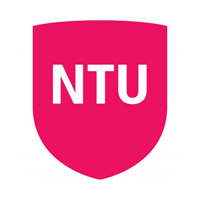fees waived
Product Design, BSc (Hons), with industry placement
Nottingham Trent University, United Kingdom
Ranking in UK
Art and Design
Art and Design
Art and Design
Costs
food & rent S$17.1K / year
Entry requirements
Scholarships
Limited quantity
Limited quantity
Limited quantity
Information
Code
Intakes
Website (External)
Programmes
Information
Duration
2029
This course emphasizes the technological aspects of design, focusing on the creation and production of products, systems, and services. Ideal for those curious about design engineering, it offers a practical, hands-on approach that explores form, function, and creativity while delving into specialized areas like electronics, robotics, mechatronics, materials testing, and manufacturing. Students will examine emerging trends such as UX, smart technology, and sustainability through activities like product teardowns, site visits, and live projects with industry leaders, including potential year-long placements at companies like TATA and Samsung.Key features include access to professional-grade equipment in dedicated workshops, collaborations with firms such as Tesco and PepsiCo, and a placement year for real-world experience. The program boasts strong graduate outcomes, with 100% of students employed or in further study within 15 months, and rankings like NTU's second place for design undergraduates. Graduates emerge with innovative design skills, engineering expertise, and business acumen, securing roles at organizations like Dyson and Disney.
Year One: Introduction to Design (20 credit points) Design & Technical Communication (20 credits) Technology for Designers (20 credit points) Design Innovation & Manufacture (60 credit points) Year Two: Professional Practice (20 credit points) Advanced Design & Technical Communication (20 credit points) Technology, Society & Sustainable Futures (20 credit points) Elective Design Project (40 credit points) Exploring Design for Society (20 credit points) Year Three: Placement Final Year: Exploration & Context (20 credit points) Commercial Project (20 credit points) Self-Directed Project (Technology & Product Design - 80 points)
A local representative of Nottingham Trent University in Singapore is available online to assist you with enquiries about this course.

